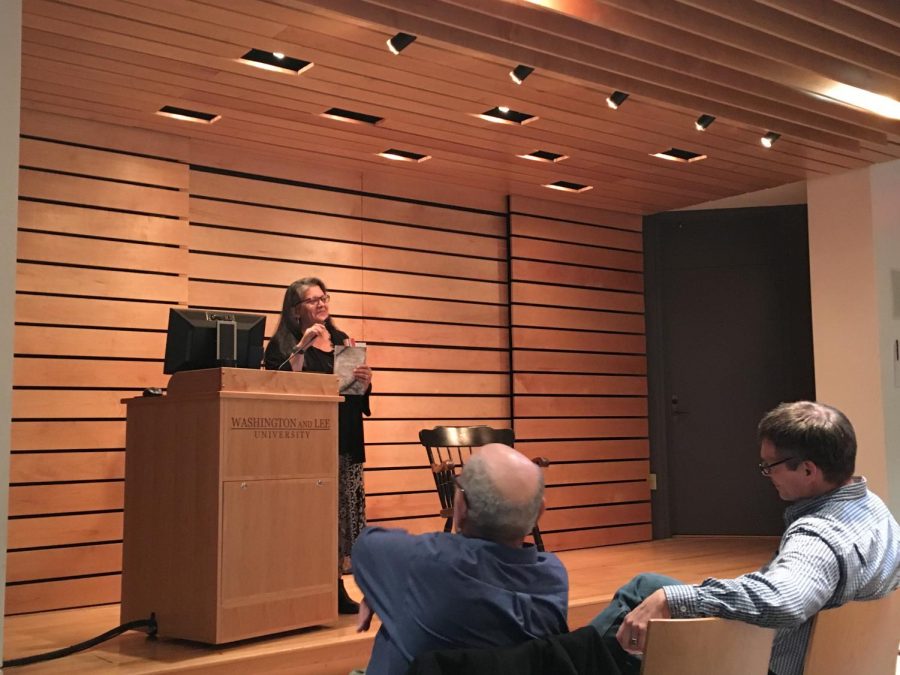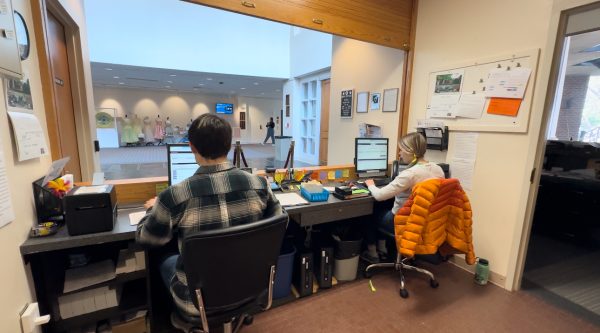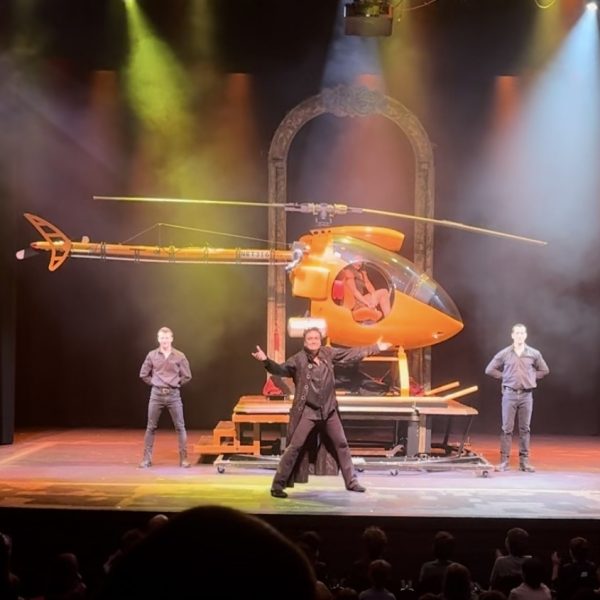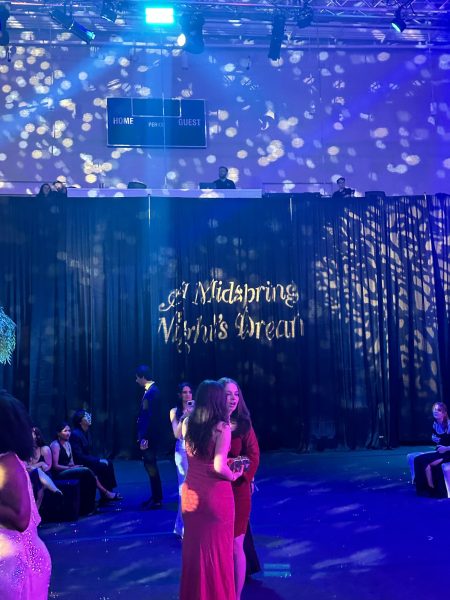New group recognizing Native Americans on campus organizes month-long celebration for the first time
The cohort of faculty and staff hosted events to highlight indigenous cultures
Deborah Miranda reads poems by Monacan Indian poet Karenne Wood at the poetry reading and tasting event on Nov. 18. Photo by Hannah Denham.
November 21, 2019
A newly-formed Native American Cohort planned events throughout November for Washington and Lee’s first month-long celebration of Native American Heritage Month.
Deborah Miranda, who is the Thomas Broadus Professor of English and a descendent of the Esselen and Chumash tribes, said she didn’t know there were other professors on campus with indigenous heritage.
Special Events Coordinator Kelly Fujiwara, of Miwok descent, and Executive Assistant to the Provost Jessica Wager, of Muskogee descent, joined Miranda in founding the cohort.
This discovery led to the strength in numbers that Miranda had been looking for.
“They said they wanted to bring more indigenous events to campus,” she said. “And I said ‘good luck, I’ve been trying for 17 years.’”
Other members include Director of Institutional History Lynn Rainville, Assistant Director of the Lenfest Center Susan Wagner, Winfrey Term Professor of Economics Joseph Guse, Associate Director of the Shepherd Program Fran Elrod and Professor of Anthropology Harvey Markowitz.
Miranda said some inspiration to form to cohort came from Joy Harjo, a member of the Muskogee Nation, who spoke on campus last February.
She said the cohort initially planned to host one event per week for Native American Heritage Month but ended up with many more.
Events included a lecture by Victoria Ferguson, creator of Natural Bridge State Park’s Monacan Indian Living History Exhibit, as well as film screenings, food tastings and poetry readings.
Alumna Jess Hopper, ‘08, presented and discussed her ABC documentary “Twice Disappeared” on Thursday, Nov. 7 about the lack of public attention surrounding missing and murdered indigenous women.
The title came from the saying that when a native American woman goes missing, she disappears twice — once in life and once in the news.
The documentary followed the story of Ashley Loring Heavy Runner, a 20-year-old woman who went missing from the Blackfeet Nation in Montana in 2017. Her family has been spearheading the search for her because of a delayed response from law enforcement, the documentary said.
According to the documentary, around 6,000 indigeounous women went missing in 2016, but less than 200 were logged in the missing persons database.
“If you’re a human and you have a heart, you can’t look away because the numbers are really staggering,” Hopper said.
Miranda said reporting on these stories is difficult because of obstacles like prosecuting and pressing charges on an Indian reservation.
“This kind of journalism is extremely important,” she said at the film screening. “It bypasses all of those obstacles and goes straight to the people.”
Hopper and her co-producer Evan Simon visited the Blackfeet Nation and the Loring family several times in the production of the documentary.
“The ultimate priority was earning the trust of a family to tell their story,” she said. “The goal is to bring humanity to this.”
Loring is still missing and her family is still searching for her two years later.
A second documentary was screened in Stackhouse on Monday, Nov. 11. “Warrior Women,” which follows the life of Lakota activist Madonna Thunder Hawk and her family, tells the story of indigenous mothers and daughters during the American Indian Movement of the 1970s.
“There’s nothing in it for me except the commitment I made long ago to fight for our people,” Thunder Hawk said in the documentary.
The documentary is part of a larger project called the Warrior Women Project (WWP) which aims to create a platform for indigenious people to share their stories and inspire future generations.
Miranda had the same goal during her talk about Two-Spirit literature on Wednesday, Nov. 13.
She discussed the work of Mohawk writer Beth Brant, specifically her writing about the Native American trickster figure, Coyote.
Coyote is often associated with creation stories, Miranda said, and because of this is closely intertwined with sexuality.
She explained the term and concept two-spirit, and responsibilities of two-spirit people in Native American tradition.
“[The term was] chosen as a way to emphasize the spiritual aspect of what is called same-sex attraction,” Miranda said. “A two-spirit person lives with the energies of two genders, or of life and death.”
Miranda said two-spirit people often cared for the dead in their communities, among many other difficult tasks.
She said this term has become international, appearing in aboriginal communities in Australia, and that because it is a new concept, it is still being fleshed out.
“Two-spirit people are a kind of coyote,” she said. “Like the coyote, we blur lines.”
Miranda said that the Spaniards often called two-spirit people joya, the Spanish word for jewel, because they were considered very valuable. ‘Aqi is an older, Chumash word for two-spirit, she said.
Miranda was the first professor to bring her same-sex partner to a university event and the only woman of color to hold an endowed position on campus in any department.
She ended the talk with a comment about Thanksgiving.
“As you’re thinking about that delicious dinner you’re going to have,” she said, “also think about whose land you’re on.”













